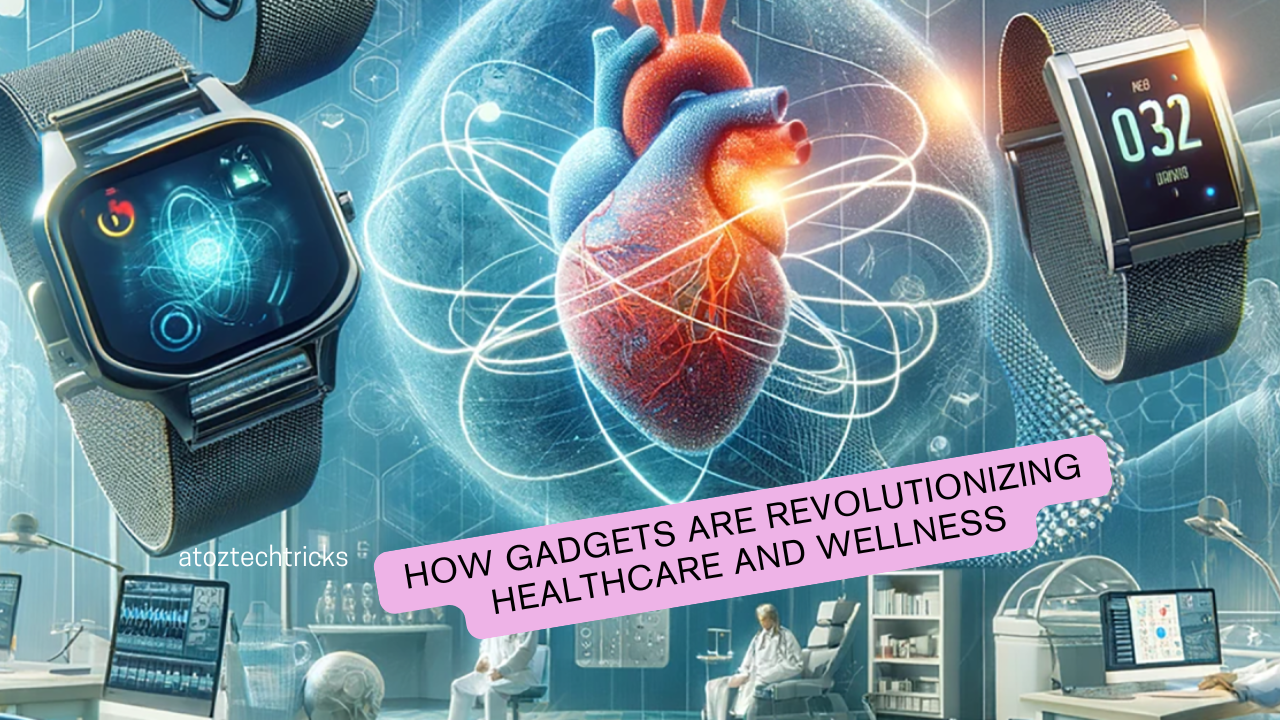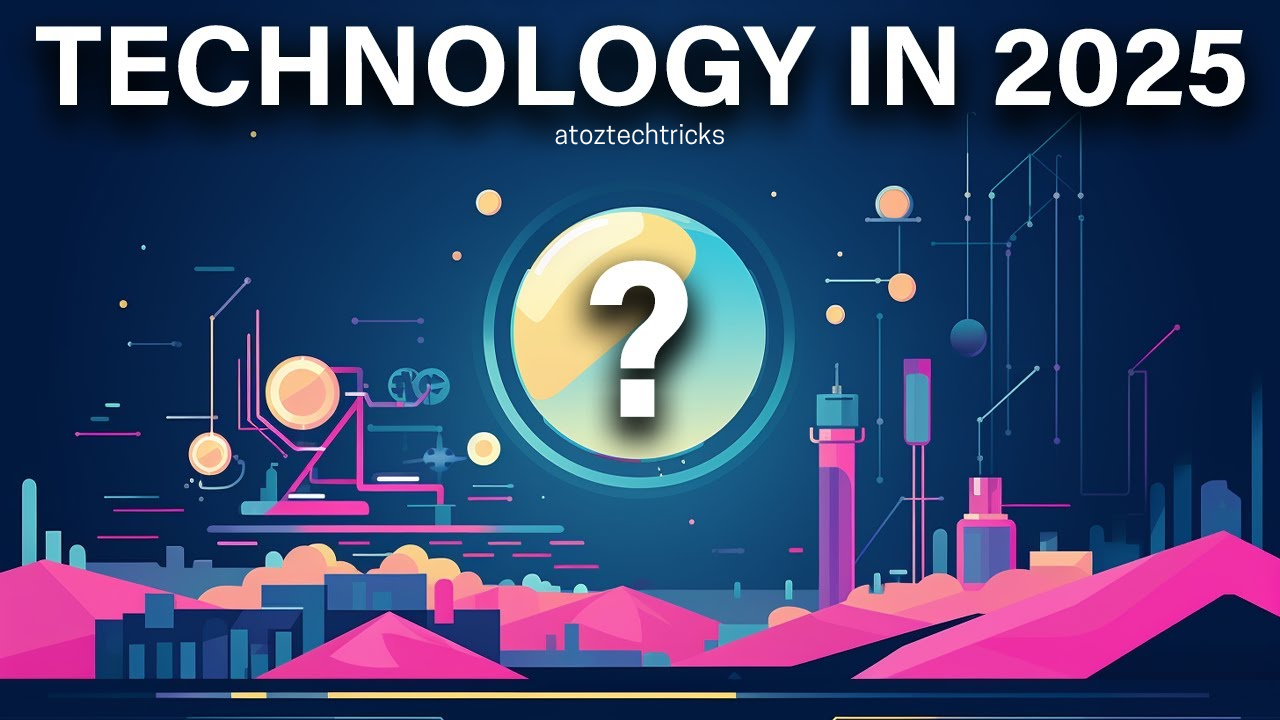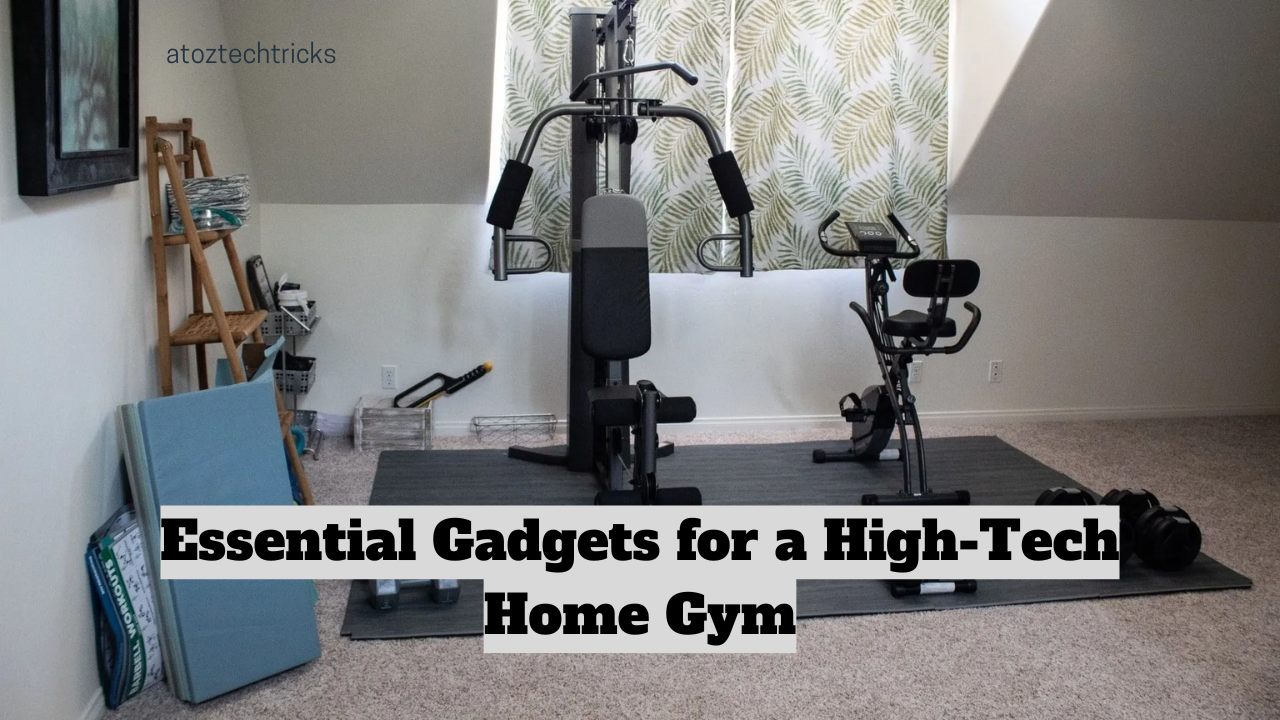In the past few decades, technological advancements have made significant strides in various fields, with healthcare and wellness being among the most impacted. The integration of gadgets in these sectors has transformed how we manage, monitor, and improve our health. From wearable devices that track our fitness levels to advanced diagnostic tools that provide early detection of diseases, gadgets are revolutionizing healthcare and wellness. This article explores how these innovations are reshaping the landscape of healthcare, providing better outcomes, and promoting a healthier lifestyle.
The Rise of Wearable Technology in Healthcare
Tracking Fitness and Activity Levels
Wearable technology, such as fitness trackers and smartwatches, has become increasingly popular in recent years. These devices allow users to monitor their physical activity, heart rate, sleep patterns, and even calorie intake. The data collected by these devices can be used to set and achieve fitness goals, making it easier for individuals to maintain a healthy lifestyle.
Fitness trackers like Fitbit, Apple Watch, and Garmin devices have made it possible for users to stay on top of their physical activity without the need for a personal trainer. These devices provide real-time feedback, allowing users to adjust their activities to meet their fitness goals. Moreover, many of these gadgets are equipped with GPS, enabling users to track their running routes, cycling paths, and other outdoor activities with precision.
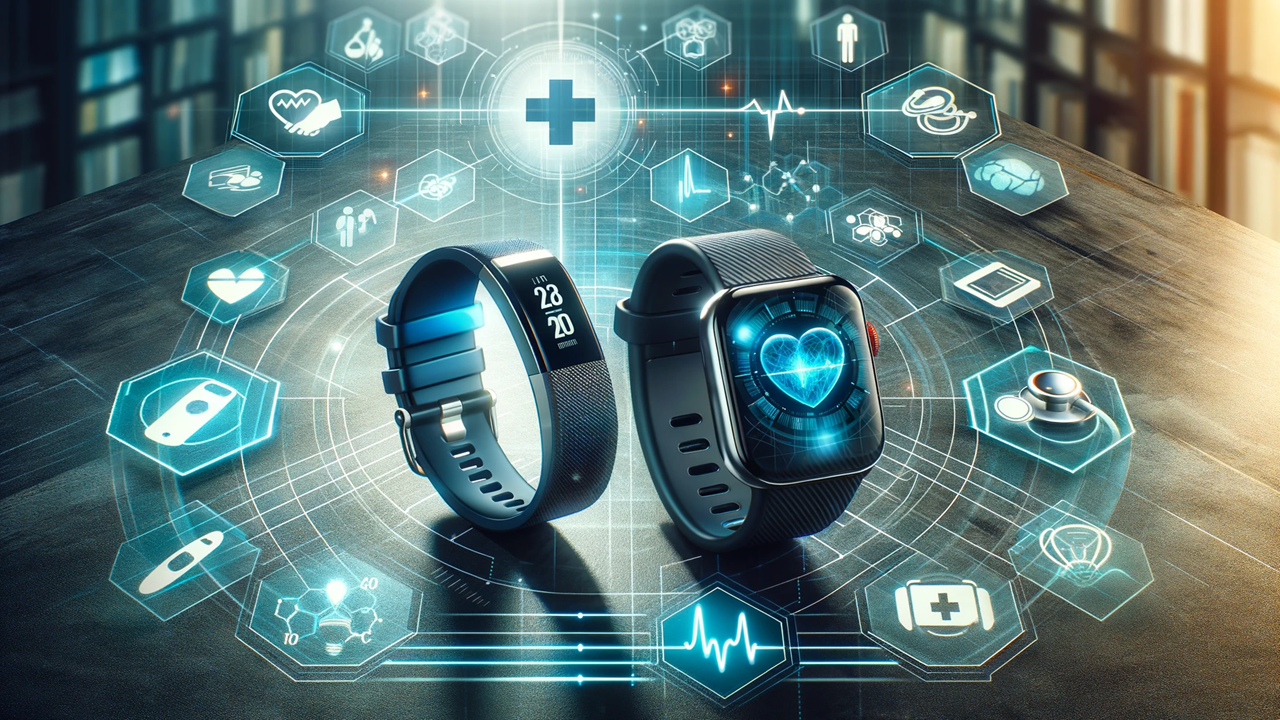
Monitoring Health Metrics
Beyond fitness tracking, wearable devices have evolved to monitor various health metrics, providing valuable insights into an individual’s overall well-being. For instance, many smartwatches now come with built-in ECG (electrocardiogram) monitors that can detect irregular heart rhythms, potentially preventing serious cardiovascular issues. Additionally, some devices can monitor blood oxygen levels, a crucial metric for individuals with respiratory conditions like asthma or COPD.
These health monitoring features are particularly beneficial for individuals with chronic conditions who need to keep a close eye on their health metrics. Continuous glucose monitors (CGMs), for example, have revolutionized diabetes management by providing real-time blood sugar readings. This allows individuals to make informed decisions about their diet, exercise, and medication, reducing the risk of complications.
Encouraging Behavioral Changes
Wearable gadgets not only track and monitor health metrics but also encourage behavioural changes that promote better health. Many devices come with features such as reminders to move, hydrate, or take medication, which can help individuals develop healthier habits. Additionally, the gamification of fitness, through challenges and rewards, motivates users to stay active and engaged in their health journey.
For example, some fitness trackers offer virtual badges or rewards for reaching certain milestones, such as walking 10,000 steps in a day or completing a certain number of workouts in a week. These incentives can make fitness more enjoyable and help individuals stay motivated over the long term.
Gadgets Enhancing Remote Healthcare
Telemedicine and Virtual Consultations
One of the most significant advancements in healthcare technology is the rise of telemedicine. Telemedicine allows patients to consult with healthcare professionals remotely, reducing the need for in-person visits. This has been particularly valuable during the COVID-19 pandemic, where social distancing and lockdown measures made traditional healthcare delivery challenging.
Telemedicine platforms are often complemented by gadgets that enable remote monitoring of vital signs and health metrics. For instance, patients can use blood pressure monitors, pulse oximeters, and digital thermometers at home and share the data with their healthcare providers during virtual consultations. This allows doctors to make informed decisions about treatment without the need for physical examinations.
Remote Patient Monitoring (RPM)
Remote patient monitoring (RPM) is another area where gadgets are making a significant impact. RPM involves the use of technology to monitor patients’ health remotely, often in real time. This approach is particularly beneficial for individuals with chronic conditions who require regular monitoring.
Devices such as wearable heart monitors, smart scales, and connected inhalers are examples of RPM tools that provide continuous data to healthcare providers. This data can be used to detect early signs of deterioration, allowing for timely intervention and preventing complications. For instance, a wearable heart monitor can detect irregular heart rhythms and alert both the patient and their doctor, potentially preventing a heart attack.
Smart Home Health Devices
Smart home health devices are another category of gadgets that are revolutionizing healthcare. These devices are designed to monitor and improve health within the home environment. Examples include smart blood pressure monitors, connected scales, and even smart beds that track sleep quality.
These devices are often integrated with mobile apps, allowing users to easily track their health metrics over time. Additionally, some smart home health devices are equipped with AI-powered algorithms that provide personalized health recommendations based on the data collected. For example, a smart scale might suggest dietary changes or exercise routines based on an individual’s weight trends and body composition.
The Role of AI and Machine Learning in Healthcare Gadgets
AI-Powered Diagnostics
Artificial intelligence (AI) and machine learning are playing an increasingly important role in healthcare gadgets. These technologies are being used to enhance the diagnostic capabilities of various devices, enabling more accurate and timely detection of diseases.
For instance, AI-powered imaging devices can analyze medical images, such as X-rays and MRIs, to detect abnormalities that may be indicative of conditions like cancer or cardiovascular disease. These devices can process vast amounts of data quickly and accurately, often outperforming human radiologists in certain tasks.
Top Gadgets for Music Lovers: Enhance Your Listening Experience
Additionally, AI algorithms are being used in wearable devices to detect early signs of health issues. For example, an AI-powered ECG monitor can analyze heart rhythm data in real time, identifying patterns that may indicate atrial fibrillation or other arrhythmias. By providing early warning signs, these devices can prompt users to seek medical attention before a condition becomes serious.
Personalized Health Insights
Another area where AI is making a significant impact is in the personalization of health insights. Gadgets equipped with AI can analyze data collected from users and provide personalized recommendations to improve their health and wellness.
For example, a fitness tracker with AI capabilities might analyze a user’s activity levels, sleep patterns, and diet to suggest personalized workout plans or dietary changes. Similarly, an AI-powered sleep monitor could provide insights into how factors like stress, diet, or exercise are affecting sleep quality, along with recommendations for improvement.
These personalized insights can help individuals make informed decisions about their health and wellness, leading to better outcomes. Moreover, as AI algorithms continue to improve, the accuracy and relevance of these insights are likely to increase.
Revolutionizing Chronic Disease Management
Diabetes Management
Gadgets have had a profound impact on the management of chronic diseases, with diabetes being a prime example. Continuous glucose monitors (CGMs) and insulin pumps have revolutionized how individuals with diabetes manage their condition.
CGMs provide real-time blood glucose readings, allowing users to monitor their levels throughout the day without the need for frequent fingerstick tests. These devices can be paired with insulin pumps, which deliver insulin in precise doses based on the user’s glucose readings. This automated approach to insulin delivery can help individuals maintain better blood sugar control, reducing the risk of complications.
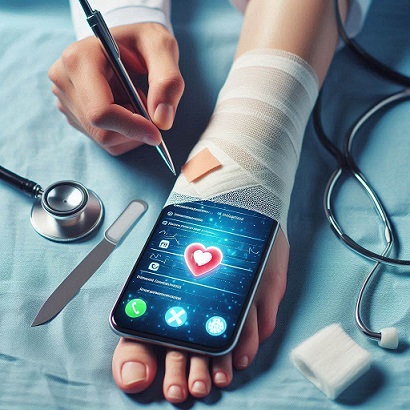
Moreover, many CGMs and insulin pumps are now integrated with smartphone apps, allowing users to easily track their glucose levels, insulin doses, and other health metrics over time. These apps often provide insights and recommendations based on the data collected, helping individuals make informed decisions about their diabetes management.
Hypertension Management
Hypertension, or high blood pressure, is another chronic condition that can be effectively managed with the help of gadgets. Smart blood pressure monitors allow individuals to measure their blood pressure at home, providing more frequent and accurate readings than traditional methods.
These devices often come with mobile apps that track blood pressure readings over time, allowing users to monitor trends and identify potential issues. Some smart blood pressure monitors also provide personalized recommendations for managing blood pressure, such as dietary changes or exercise routines.
Additionally, AI-powered algorithms can analyze blood pressure data to identify patterns that may indicate an increased risk of cardiovascular events. By providing early warning signs, these devices can help individuals take proactive steps to manage their hypertension and reduce the risk of complications.
Respiratory Disease Management
Gadgets are also playing a crucial role in the management of respiratory diseases, such as asthma and chronic obstructive pulmonary disease (COPD). Connected inhalers and smart spirometers are examples of devices that can help individuals manage their respiratory conditions more effectively.
Connected inhalers are equipped with sensors that track when and how often the inhaler is used. This data can be shared with healthcare providers, allowing them to monitor the patient’s condition and adjust treatment as needed. Additionally, some connected inhalers provide reminders to take medication, helping individuals adhere to their treatment plan.
Smart spirometers, on the other hand, allow individuals to measure their lung function at home. These devices can provide real-time feedback on lung capacity and airflow, helping individuals monitor their condition and detect early signs of deterioration. By providing actionable insights, smart spirometers can help individuals manage their respiratory conditions more effectively and reduce the risk of complications.
The Future of Healthcare Gadgets
Integration with Electronic Health Records (EHRs)
As gadgets continue to evolve, one of the key trends is the integration of data from these devices with electronic health records (EHRs). This integration allows healthcare providers to have a comprehensive view of a patient’s health, including data collected from wearable devices, smart home health devices, and remote monitoring tools.
By having access to this data, healthcare providers can make more informed decisions about treatment and care. For example, a doctor might use data from a patient’s fitness tracker to assess their physical activity levels and provide personalized recommendations for improving their health.
Additionally, the integration of EHRs with AI-powered analytics tools can help identify patterns and trends in patient data, leading to more accurate diagnoses and personalized treatment plans. This approach has the potential to improve patient outcomes and reduce the overall cost of healthcare.
The Role of 5G in Healthcare Gadgets
The rollout of 5G technology is expected to have a significant impact on healthcare gadgets, enabling faster and more reliable data transmission. This will be particularly important for devices that rely on real-time data, such as remote monitoring tools and telemedicine platforms.
With 5G, healthcare gadgets will be able to transmit data more quickly and with lower latency, allowing for more accurate and timely monitoring of patients. This will be especially beneficial for individuals with chronic conditions who require continuous monitoring.
Additionally, 5G will enable the development of new healthcare gadgets that require high-speed data transmission, such as advanced telemedicine platforms that support high-definition video consultations and real-time diagnostics.
Expanding Access to Healthcare
One of the most promising aspects of healthcare gadgets is their potential to expand access to healthcare, particularly in underserved and remote areas. Telemedicine platforms, remote monitoring tools, and mobile health apps can provide individuals in these areas with access to healthcare services that would otherwise be unavailable.
For example, individuals in rural areas may not have access to specialized healthcare providers, such as cardiologists or endocrinologists. However, with telemedicine and remote monitoring tools, these individuals can consult with specialists remotely and receive the care they need without having to travel long distances.
Additionally, mobile health apps can provide individuals in underserved areas with access to health information and resources, empowering them to take control of their health and wellness.
Gadgets are revolutionizing healthcare and wellness by providing new ways to monitor, manage, and improve health. From wearable fitness trackers to AI-powered diagnostic tools, these devices are reshaping the healthcare landscape, providing better outcomes, and promoting a healthier lifestyle. As technology continues to advance, we can expect to see even more innovations in healthcare gadgets, leading to more personalized, accessible, and effective healthcare for all. The future of healthcare is undoubtedly digital, and gadgets will play a central role in shaping this future.
